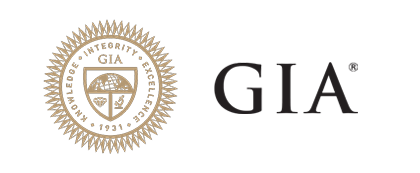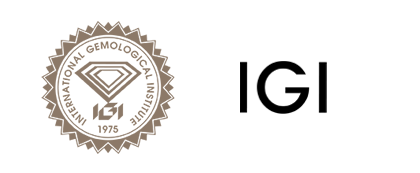
The Beginnings
Lab-grown diamonds have come a long way since their inception in the mid-20th century. The process of creating lab-grown diamonds involves replicating the extreme heat and pressure conditions that occur deep beneath the earth's surface. While scientists and engineers had been attempting to create lab-grown diamonds since the late 1800s, it wasn't until 1954 that the first lab-grown diamond was produced by General Electric's laboratories. However, these early lab-grown diamonds were not of high enough quality to compete with natural diamonds.
It would take several decades and significant technological advancements before lab-grown diamonds could finally match the quality and beauty of natural diamonds. In the early 2000s, new technologies were developed that allowed for the creation of high-quality lab-grown diamonds that are virtually indistinguishable from natural diamonds. These advancements have dramatically accelerated the timeline of diamond formation and have opened up new possibilities for the jewelry industry. Today, lab-grown diamonds are a popular and sustainable alternative to natural diamonds.
It would take several decades and significant technological advancements before lab-grown diamonds could finally match the quality and beauty of natural diamonds. In the early 2000s, new technologies were developed that allowed for the creation of high-quality lab-grown diamonds that are virtually indistinguishable from natural diamonds. These advancements have dramatically accelerated the timeline of diamond formation and have opened up new possibilities for the jewelry industry. Today, lab-grown diamonds are a popular and sustainable alternative to natural diamonds.

The Composition
ORRO Certified Lab Grown Diamonds have the same hardness as natural diamonds, as they are created under the same extreme heat and pressure conditions that occur deep within the earth's mantle. They also have the same chemical composition, which makes them optically, physically, and chemically identical to natural diamonds. This means that lab-grown diamonds have the same durability, longevity, and resistance to scratching and chipping as natural diamonds, making them a great choice for engagement rings, wedding bands, and other fine jewelry. Most importantly, lab grown diamonds have the exact same refractive and refraction index creating the same exact brilliance, fire and scintillation as in a naturally minded diamond.
Pricing
Lab-grown diamonds offer a significant advantage over their mined counterparts in terms of pricing. They can be priced up to 75% to 85% lower, not due to differences in quality, but because the costly mining process is eliminated from their supply chain. Unlike the prices of natural diamonds which are kept artificially high by a near monopoly in the diamond mining industry, healthy competition among lab-grown diamond producers helps keep prices down.
For example, if a natural diamond of a particular specification retails for $10,000, an equivalent lab-grown diamond in terms of quality and specifications would cost around $2,000.
For example, if a natural diamond of a particular specification retails for $10,000, an equivalent lab-grown diamond in terms of quality and specifications would cost around $2,000.
True Source
The origin of diamonds used in jewelry for momentous occasions is a critical aspect to consider. In light of the mining process used in obtaining natural diamonds, it is virtually impossible to trace their origin, despite various claims by diamond companies that their diamonds are conflict-free. The highly acclaimed movie "Blood Diamond" further sheds light on the atrocities associated with mined diamonds. The Kimberley Process was initiated in 2003 to certify that diamonds are conflict-free. Although this process has reduced the number of conflict diamonds in the market, it remains compromised by loopholes, thereby failing to stop many natural diamonds mined in war zones or under unethical circumstances from being sold to retail customers globally.
In contrast, each lab-grown diamond sold can be traced back to its source lab and has a clean origin history, thus giving our customers peace of mind when adorning our jewelry.
In contrast, each lab-grown diamond sold can be traced back to its source lab and has a clean origin history, thus giving our customers peace of mind when adorning our jewelry.
The Grading Process
The grading process for lab-grown diamonds is conducted with the same rigor and precision as natural mined diamonds. As lab-grown diamonds are chemically and physically identical to natural diamonds, they are graded using the same 4Cs - Carat, Cut, Clarity, and Color. The International Gemological Institute (IGI) and Gemological Institute of America (GIA) are reputable institutes that commonly grade lab-grown diamonds.
At ORRO, we have our own diamond grading laboratory where each diamond, regardless of size, is manually graded and certified using the 4Cs. Our highly skilled gemologists are trained to inspect and assess each diamond with great attention to detail, ensuring the highest standards are met. Our commitment to quality and accuracy is reflected in the superior grade of our lab-grown diamonds.
At ORRO, we have our own diamond grading laboratory where each diamond, regardless of size, is manually graded and certified using the 4Cs. Our highly skilled gemologists are trained to inspect and assess each diamond with great attention to detail, ensuring the highest standards are met. Our commitment to quality and accuracy is reflected in the superior grade of our lab-grown diamonds.

Certification
Lab-grown diamonds and naturally mined diamonds have almost no differences when it comes to the information present in both certificates as they are chemically and physically identical. The only thing that sets them apart on the certificate is an additional wording of “Lab-grown” or “Laboratory-grown”.
At ORRO, every lab-grown diamond we sell comes with an exclusive and weighty trademark metal diamond certificate card that includes all the diamond's details, as well as security features and a unique QR code for online authentication. We take pride in ensuring that our customers have complete transparency and confidence in the authenticity and quality of their ORRO certified lab-grown diamond.
At ORRO, every lab-grown diamond we sell comes with an exclusive and weighty trademark metal diamond certificate card that includes all the diamond's details, as well as security features and a unique QR code for online authentication. We take pride in ensuring that our customers have complete transparency and confidence in the authenticity and quality of their ORRO certified lab-grown diamond.

|

|

|

Ethical Vs Unethical
At ORRO, we place a strong emphasis on the ethical aspect of the diamond industry, which is why we are committed to providing our customers with guilt-free, lab-grown diamonds at competitive prices. Unlike naturally mined diamonds, which have been associated with funding armed conflicts, human rights violations, and child labor, our lab-grown diamonds are free from any such concerns.
Diamond mining activities have often had a detrimental impact on human populations, including displacement and mistreatment. Furthermore, mining has been linked to environmental damage, including air pollution, land destruction, water source contamination, and fossil fuel depletion.
By choosing ORRO Certified Lab Grown diamonds, you can rest assured that you are making an ethical and responsible choice. Our diamonds are free from any associations with unethical practices, making them a guilt-free option for those seeking the beauty and rarity of diamonds without contributing to the harm caused by traditional diamond mining.
Diamond mining activities have often had a detrimental impact on human populations, including displacement and mistreatment. Furthermore, mining has been linked to environmental damage, including air pollution, land destruction, water source contamination, and fossil fuel depletion.
By choosing ORRO Certified Lab Grown diamonds, you can rest assured that you are making an ethical and responsible choice. Our diamonds are free from any associations with unethical practices, making them a guilt-free option for those seeking the beauty and rarity of diamonds without contributing to the harm caused by traditional diamond mining.
From Rough To Retail
The concept of "Rough to Retail" encompasses the entire journey of a diamond from its initial formation, whether naturally mined or created in a lab-grown setting, to the point where it is purchased by the end customer.
This process involves several stages, including sorting, cutting, polishing, grading, and certification, which are critical to ensure that the diamond is of the highest quality possible.
Interestingly, lab-grown diamonds tend to have a superior cut grade compared to naturally mined diamonds. This is because lab-grown diamonds are deliberately grown in a way that optimizes their shape and structure for excellent cut grade.
In contrast, cutters of natural diamonds tend to prioritize carat weight based on the diamond's shape and size, which can impact the final cut grade of the diamond. At ORRO, we ensure that each lab-grown diamond undergoes the same rigorous "Rough to Retail" process as natural diamonds to deliver the best possible quality to our customers.
This process involves several stages, including sorting, cutting, polishing, grading, and certification, which are critical to ensure that the diamond is of the highest quality possible.
Interestingly, lab-grown diamonds tend to have a superior cut grade compared to naturally mined diamonds. This is because lab-grown diamonds are deliberately grown in a way that optimizes their shape and structure for excellent cut grade.
In contrast, cutters of natural diamonds tend to prioritize carat weight based on the diamond's shape and size, which can impact the final cut grade of the diamond. At ORRO, we ensure that each lab-grown diamond undergoes the same rigorous "Rough to Retail" process as natural diamonds to deliver the best possible quality to our customers.
